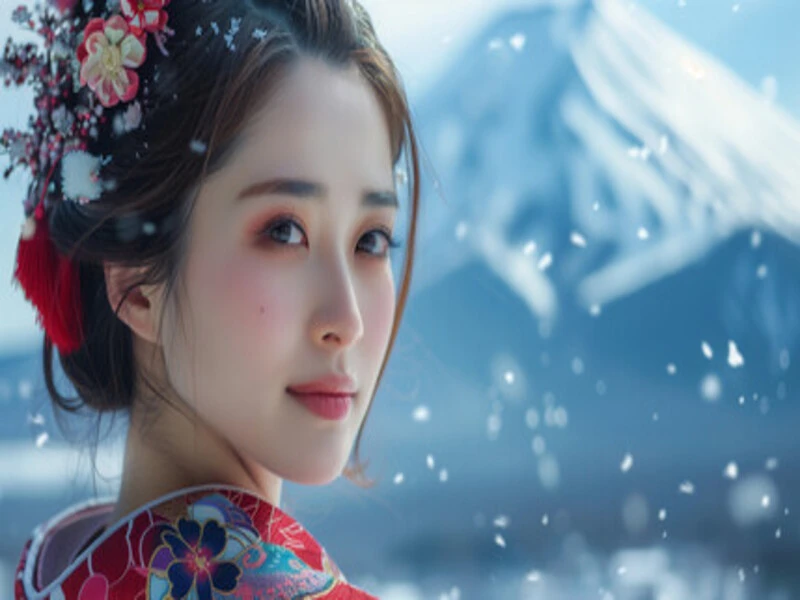Ouji fashion, like many subcultures within Japanese street fashion, has deep roots in historical and cultural influences. The term “Ouji” itself means “prince” in Japanese, reflecting the regal and aristocratic vibe that the style often embodies. In the Western community, Ouji fashion was initially known as “kodona,” a term that has since fallen out of favor. This term was popularized by Ryutaro Arimura, a prominent figure in the Visual Kei scene, during an interview with the Gothic Lolita Bible. Despite its brief popularity, the term “kodona” was a one-off, and the fashion community has since embraced “Ouji” as the more fitting descriptor.

Ouji fashion can be seen as an offshoot of the broader Lolita fashion movement, which itself draws inspiration from Victorian and Rococo fashion. However, while Lolita fashion focuses on voluminous skirts, petticoats, and an overall feminine silhouette, Ouji fashion incorporates tailored pants, waistcoats, and structured jackets, creating a look that is both dapper and delicate. This style often features intricate detailing, such as lace, ruffles, and embroidery, which are hallmarks of Lolita fashion but applied in a way that evokes the image of a young prince.
The Aesthetics of Ouji Fashion
Ouji fashion is characterized by its meticulous attention to detail and its ability to balance traditionally masculine clothing with a sense of elegance and fantasy. A typical Ouji outfit might include knee-length shorts or breeches, a ruffled blouse or shirt, a waistcoat or vest, and a tailored jacket or coat. Accessories play a crucial role in completing the look, with items such as knee-high socks, cravats or bow ties, top hats or berets, and ornate jewelry adding to the princely aesthetic.
One of the defining features of Ouji fashion is its versatility. While it adheres to certain stylistic conventions, there is ample room for personal expression and creativity. Some adherents of Ouji fashion might opt for a more historical look, drawing heavily from Victorian or Edwardian menswear, while others might incorporate elements of steampunk, gothic, or even punk aesthetics. The use of rich fabrics, such as velvet, brocade, and silk, further enhances the luxurious and sophisticated feel of Ouji fashion.
Ouji Lolita
Our Ouji fashion collection specializes in Ouji Lolita, a subgenre that merges the whimsical femininity of Lolita fashion with the structured, masculine elements of Ouji fashion. Ouji Lolita outfits often feature the same opulent fabrics and intricate details as traditional Lolita attire but are designed to create a more androgynous silhouette. This blend of styles allows for a greater range of expression and caters to those who appreciate the ornate beauty of Lolita fashion but prefer a more gender-neutral or masculine presentation.

The appeal of Ouji Lolita lies in its ability to transcend traditional gender norms and offer a style that is both elegant and bold. It is a celebration of individuality and a rejection of the rigid boundaries that often define mainstream fashion. By combining the best elements of Lolita and Ouji fashion, Ouji Lolita creates a look that is at once nostalgic and contemporary, paying homage to historical fashion while remaining firmly rooted in the present.
The Role of Community and Culture in Ouji Fashion
As with many alternative fashion subcultures, the community surrounding Ouji fashion plays a vital role in its development and propagation. Online forums, social media groups, and dedicated events provide spaces for enthusiasts to share their outfits, offer advice, and connect with like-minded individuals. These communities foster a sense of belonging and support, encouraging creativity and self-expression.
In Japan, Ouji fashion can often be seen at events such as Harajuku Fashion Walks, Gothic and Lolita tea parties, and various anime and manga conventions. These gatherings provide opportunities for Ouji fashion enthusiasts to showcase their ensembles, participate in fashion shows, and engage with others who share their passion. Internationally, the influence of Ouji fashion has spread, with dedicated communities in North America, Europe, and beyond, each bringing their unique interpretations and contributions to the style.
The Future of Ouji Fashion
Ouji fashion continues to evolve, adapting to changing trends and the diverse tastes of its adherents. As alternative fashion becomes more mainstream, there is an increasing interest in styles that challenge conventional notions of gender and beauty. Ouji fashion, with its blend of elegance and masculinity, is well-positioned to appeal to those seeking a distinctive and expressive mode of dress.
Our Ouji fashion collection is dedicated to celebrating this unique style by offering a range of high-quality garments and accessories that embody the spirit of Ouji Lolita. From intricately designed waistcoats and tailored shorts to elegant blouses and statement accessories, our products are crafted to provide both authenticity and individuality. By embracing the principles of Ouji fashion, we aim to inspire our customers to explore new dimensions of self-expression and to appreciate the artistry and craftsmanship that define this captivating style.
The Bottom Line
Ouji fashion represents a fascinating intersection of historical influences, cultural innovation, and personal expression. As a counterpart to Lolita fashion, it offers a unique blend of elegance and masculinity, creating a style that is both timeless and contemporary. Whether known as “prince fashion,” “boystyle,” or simply Ouji, this fashion movement continues to captivate and inspire, providing a platform for those who seek to defy conventional norms and celebrate their individuality.
Our Ouji fashion collection is a testament to the enduring appeal of this style, offering a curated selection of garments and accessories that embody the essence of Ouji Lolita. Through our collection, we invite you to discover the charm of Ouji fashion and to embrace a look that is truly your own.

